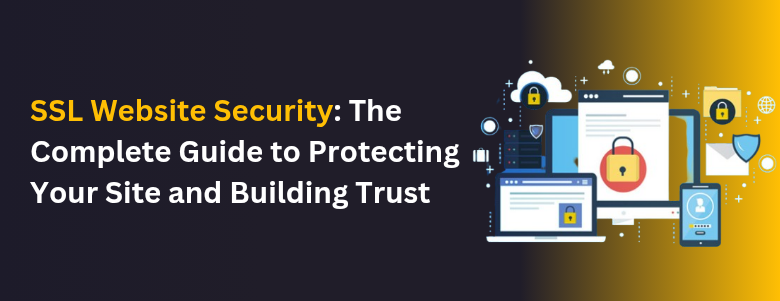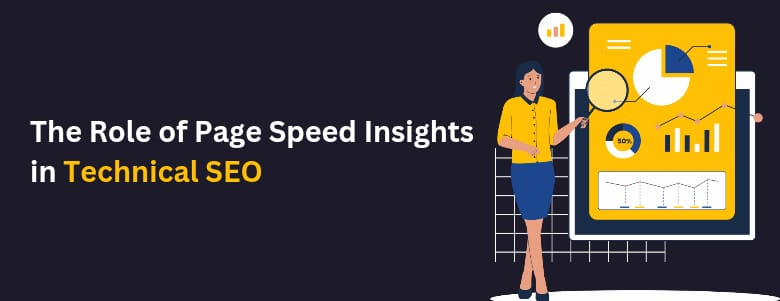Secure Your Website Today: The Complete SSL Guide for Trust and SEO
Protect your website and boost SEO with SSL. Learn why SSL matters, how to install it properly, and build user trust with secure, encrypted connections. Table of Contents Table of Contents Introduction: Why SSL Is No Longer Optional What Is SSL? How Does SSL Work or Operate? Why SSL Actually Matters Benefits of SSL The Drawbacks (Because Nothing’s Perfect) How to Properly Install SSL SSL and SEO: Best Friends Forever Common Myths About SSL Conclusion FAQs Why SSL Is No Longer Optional Let’s set the scene. You walk into a coffee shop. No doors. No security cameras. The barista asks for your credit card—loudly—and scribbles it on a napkin. How safe do you feel? Probably somewhere between “mildly concerned” and “nope, I’m out.” That’s exactly what browsing an unsecured website feels like to a user in 2025. And look—back in the early 2000s, nobody cared. The internet felt like the Wild West. But those days are long gone. Privacy lawsuits are trending. Users are smarter. Google is policing websites like a digital sheriff. And if your site doesn’t have SSL? You’re not just behind the curve—you’re basically saying “don’t trust me” right in the URL bar. So yeah—this isn’t just another tech acronym. SSL (Secure Sockets Layer) is the padlock on your digital storefront. The barrier between your users and chaos. This guide? It’s everything you need to stop being the unsafe weirdo on the internet. Not sure how to install SSL on your site? Don’t worry—this guide walks you through it step by step. 1. What Is SSL? Okay, let’s break it down. SSL stands for Secure Sockets Layer. In plain English: It creates a secure, encrypted tunnel between your visitor’s browser and your web server. Kind of like passing a note in class—but folded into an origami fortress only your friend can unfold. When SSL is working, your site shows up as https://yourwebsite.com, not http://. This is known as HTTPS encryption, and it’s what keeps data safe from prying eyes during transit. There’s a little padlock next to it. It’s subtle, but powerful. Like wearing a suit to a pitch meeting—it just makes you look credible. Without SSL? Your data is wide open. Anyone with Wi-Fi and bad intent could be watching. Install SSL to block them from getting access to your users’ information. 2. How Does SSL Work or Operate? So here is the deal: Every time someone visits or reaches out to your site, their browser and your server do a little digital handshake. It’s like a trust fall between machines or a demonstration of faith in AI. All of this happens in less than a second. It’s invisible. Seamless. And kind of beautiful in a nerdy way. But here’s the kicker: if that certificate is expired or something doesn’t line up? The browser throws a red flag. That’s why it’s critical to install SSL correctly and ensure it’s always up to date. 3. Why SSL Actually Matters We hear this all the time: “My site’s just a blog. I’m not selling anything.” Cool story—but here’s the thing: SSL is for everyone, not just e-commerce. If you’ve got: …you’re collecting user data. That makes you a target. Period.Using SSL for website security isn’t just best practice—it’s a basic requirement for protecting user data and earning trust. Even if you’re not collecting data? Modern browsers will still flag your site as “Not Secure.” That’s a vibe killer. It’s like going on a date with spinach in your teeth—doesn’t matter how good the content is if the first impression flops. And let’s not forget about the legal side. GDPR, CCPA—these are not just buzzwords. They’re laws. And they expect you to encrypt user data like a responsible digital adult or entity. 4. Benefits of SSL Real Security SSL encrypts everything between a user and the server. Credit cards, passwords, even that cheeky contact form comment—nobody can peek. Beyond encryption and trust, knowing how to install SSL properly can boost your SEO and user confidence. Better SEO Google straight-up said it: secure sites get ranking boosts. That’s why more site owners are paying attention to SSL SEO benefits as an easy win in a crowded search landscape. Is it the #1 ranking factor? Nope. But is it a free edge in the algorithm? Absolutely. Want to make sure your site is fully optimized from security to search visibility? Our SEO services can help you install SSL correctly and enhance your online performance. User Trust That padlock icon isn’t just decorative—it’s subconscious branding. It says, “You’re safe here.” And users today? They don’t stick around if they don’t feel safe. Anti-Phishing SSL helps prevent fake lookalike sites from tricking your users. It is not foolproof, but it makes phishing way harder. That’s a win in my dictionary. 5. The Drawbacks (Because Nothing’s Perfect) Alright, let’s get real for a second. SSL is awesome. But it’s not totally painless. Performance: There’s a slight delay on first page loads. We’re talking milliseconds, but hey—worth mentioning. Most users will never notice. So yeah, it’s not 100% sunshine and rainbows. But the tradeoff? Totally worth it. 6. How to accurately or properly install SSL. Let us keep this simple: Install SSL through your hosting provider using their one-click feature 7. SSL and SEO: Best Friends Forever Let’s talk about rankings. Modern SEO doesn’t just reward content—it favors sites that implement HTTPS encryption for user trust and security. SSL isn’t the silver bullet for SEO, but it’s a ranking signal—and that matters. While content is king, SSL SEO benefits like trust indicators and reduced bounce rates give your site a measurable edge. Google’s own John Mueller confirmed it. HTTPS = a trust signal. Combined with fast load times, mobile optimization, and solid content? You’re climbing that ladder. Also—users stick around longer when they feel safe. Lower bounce rates are equal to higher engagement and better rankings. So yes. SSL helps you get found and keeps people from running the other way. And while technical
Secure Your Website Today: The Complete SSL Guide for Trust and SEO Read More »









